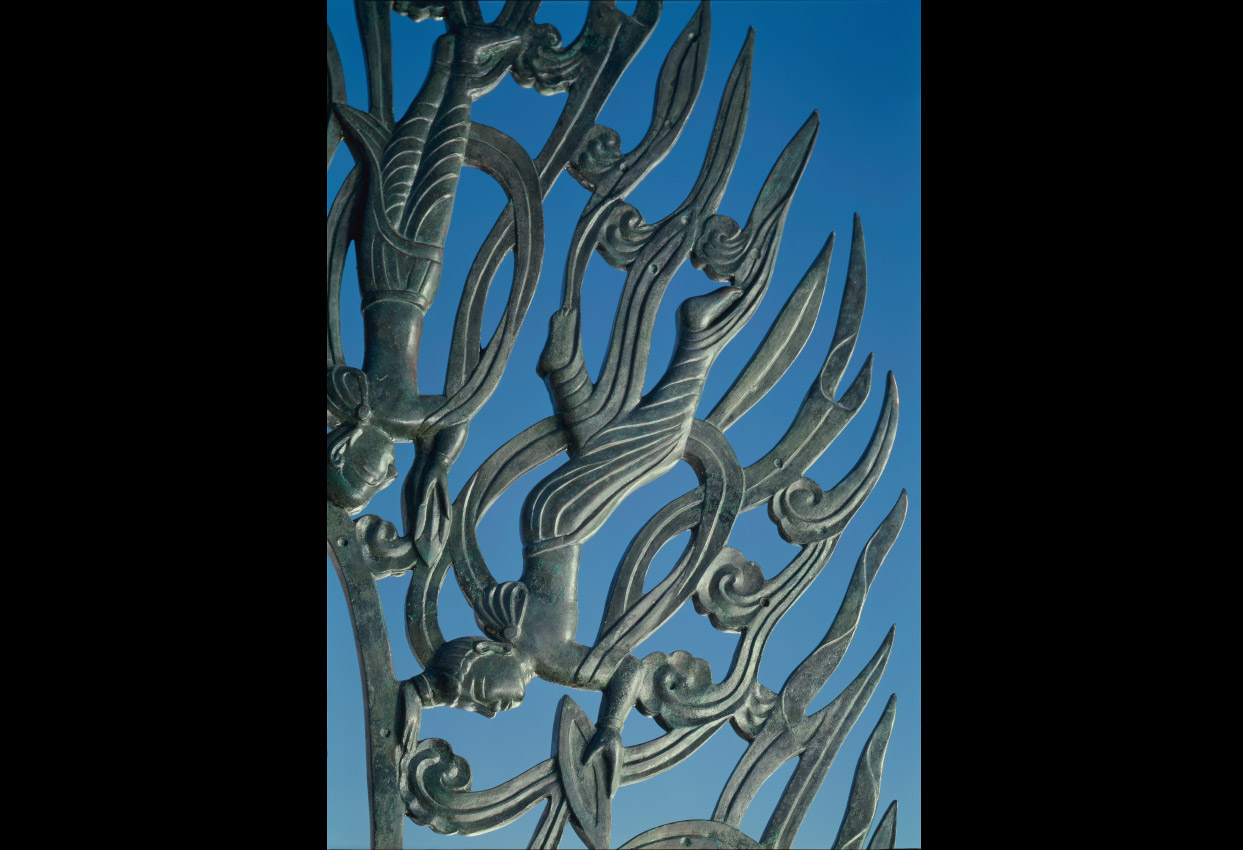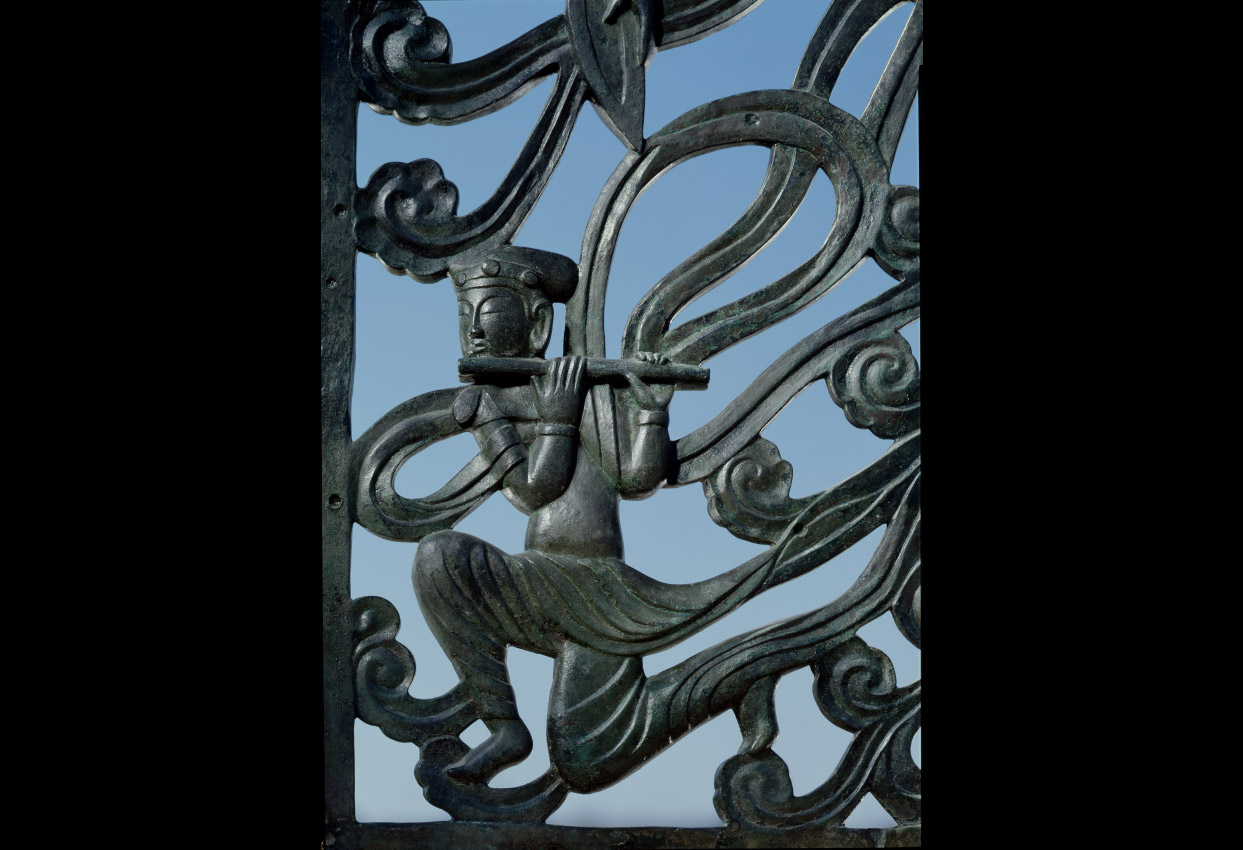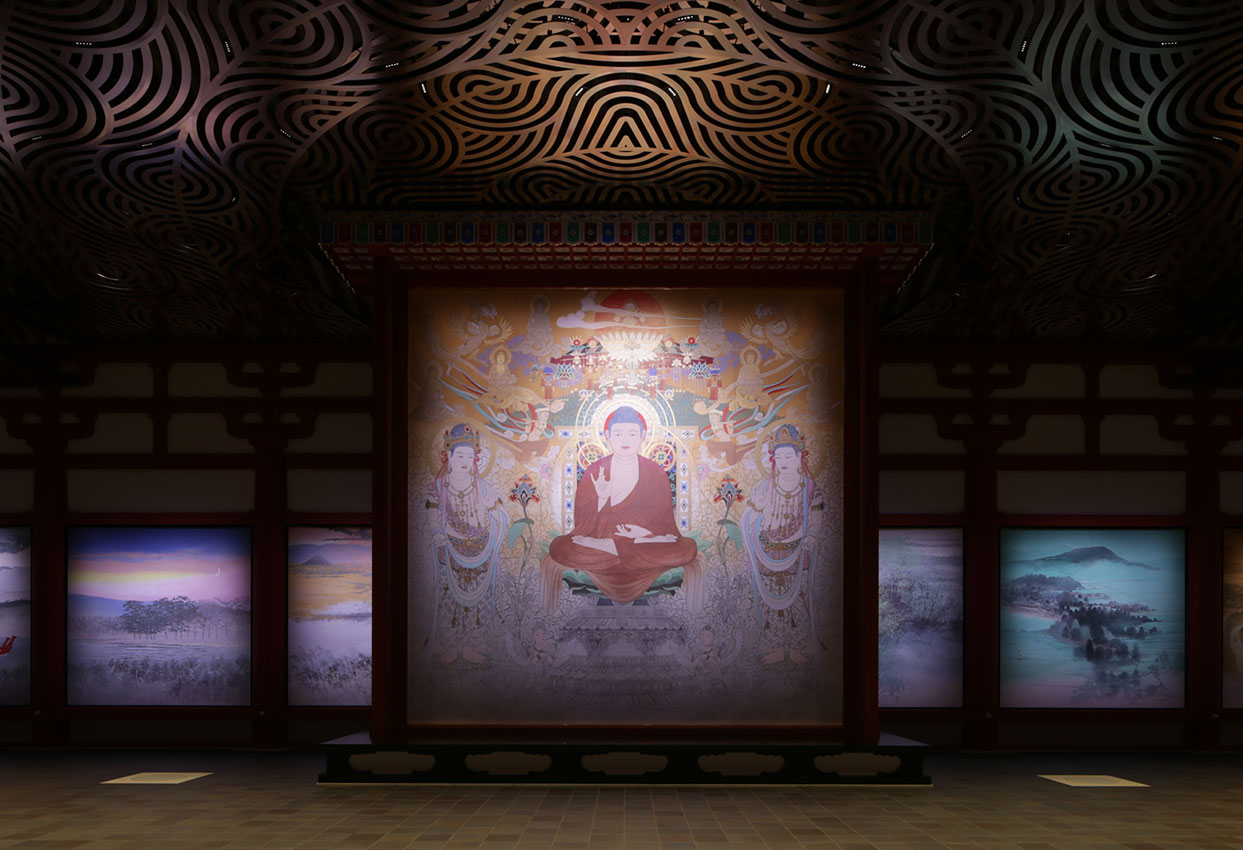1. East Pagoda
The multi-tiered building before you is Yakushiji’s East Pagoda (Toto). Yakushiji is one of the seven great temples of Nara and head temple of the Hosso school, Japan’s oldest Buddhist order. The pagoda is 33.6 meters high and is the only wooden structure to have survived fires and other disasters at the temple since it was first built over 1,300 years ago. One of several National Treasures at the temple, the East Pagoda is a three-story structure, but appears to have six roofs due to an architectural technique that would have been cutting edge at the time of construction. The top roof and every second tier below are true roofs, while the others are “pent,” or “skirt” roofs. A central pillar supports the structure of the true roofs, but the “skirt” tiers are largely decorative, helping to disguise structural elements while protecting them from the elements. The unique interweaving of different-sized roofs provides an inspiring and grand rhythmical balance. Ernest Fenollosa (1853–1908), the American historian of Japanese art and Tokyo Imperial University professor who saw the East Pagoda when he was involved in conducting the first inventory of Japan’s Important Cultural Properties, is credited with describing it as “frozen music.” The pagoda’s finial incorporates a Water Flame bronze object, that depicts celestial figures dancing and playing flutes on bronze openwork and serves as a charm protecting the pagoda from fire.




